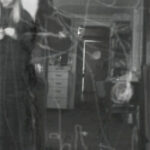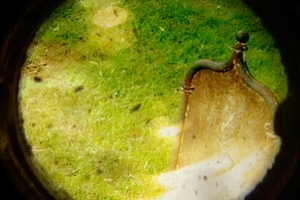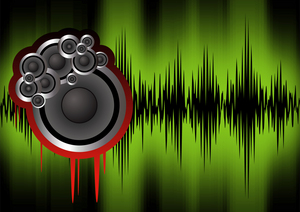The Lincoln Heights Jail, overlooking the Los Angeles River and railroad tracks, is situated on the 400 block at North Avenue 19. It was the premiere haunted location the five teenagers in Cartoon Network’s The Othersiders investigated. The show aired June 17, 2009, and the broadcast was suitably spooky and scary. A visit to the solitary confinement cell area brings on feelings of nausea and claustrophobia. An EVP recording near an elevator shaft believed to be the site of a death picks up a whispered voice. A chair in the cell block moves from the laundry room to a hallway and back again with drag marks on the floor. The Lincoln Heights Jail may have news articles of its ghost stories tucked away in the Los Angeles Times archives but it is not listed on the haunted locations website known as Shadowlands. If the Lincoln Heights Jail is haunted, its history may point to some of the reason.
Lincoln Heights Jail History Prior to 1931
The site where the Lincoln Heights Jail is located has been a spot for prisoners to be incarcerated since the historic days of the Gold Rush in California. At first, prisoners were kept in an adobe building which had neither cells nor bars. Instead, the prisoners were shackled to iron holders attached to logs so they could not escape. As the city of Los Angeles grew up around it, crime did also and the old jail became the East Side Police Station with extensions built onto the original building. During the early 1900’s, this police station was more a holding place for prisoners than a permanent lockup.
A census of prisoners being held in the Lincoln Heights Jail on January 4, 1920, reveals a jail population which ranged in age from 18 to 77 years in age. Of the prisoners, 55 percent were single, most were white, and 36.7 percent were immigrants still with an alien status. Most of the immigrants were from Mexico.
One of the most infamous prisoners held at the Lincoln Heights Jail during this time was 19-year-old William Edward Hickman. After his capture in Oregon, he was placed in the jail on December 27, 1927, pending his trial. He was convicted for the murder and dismemberment of a banker’s daughter, 12-year-old Marian Parker. Eventually he left Lincoln Heights Jail to await execution by hanging at San Quentin on October 19, 1928. This crime was one of the most shocking the United States had experienced to date.
Lincoln Heights Jail History in the 30’s
In 1931, the old jail buildings were demolished to make room for the new Lincoln Heights Jail and a central police station. The new jail, constructed in Art Deco architectural style, could hold 625 prisoners. It was open for business in December 1931.
During the 30’s, the Lincoln Heights Jail was also known as the Los Angeles City Jail. It was recognized by visiting authorities as being clean and orderly. Still mostly for male prisoners, the second floor was where female prisoners were housed. While male prisoners could work at some outside volunteer jobs to obtain an early release, female prisoners remained on the second floor for the duration of their sentences. Some of the jobs inside the jail included working at food preparation, using sewing machines to make prison work jackets out of used blankets, making stuffed toys for disadvantaged neighborhood children, and hairstyling.
The prisoners at Lincoln Heights Jail were either being held during their trials for more serious offenses or were imprisoned for misdemeanors like hitchhiking, disorderly conduct, petty theft, or lewd behavior. If a prisoner showed uncooperative behaviors, he would be locked in solitary confinement, the place where the teens in The Othersiders had the most terrifying experiences. There, he would receive two instead of three meals per day.
It is not clear if prisoners were allowed to smoke while incarcerated. It is known that prisoners were not allowed to use any ashtrays in the jail. Police officers who visited the jail on official business were reminded by a placard at the entrance that their weapons would be kept under lock and key until they left the jail. All visitors were required to show positive identification to enter the building.
In 1939, because of diphtheria the Lincoln Heights Jail had to be cleaned and thoroughly disinfected under orders handed down by the Health Commission of Los Angeles.
Lincoln Heights Jail History in the 40’s
In May 1940, Lucile Watson, star of Broadway and a later Academy Award nominee, experienced the accommodations of the women’s section of the jail when she and friend Barbara Fliescher were arrested for being drunk. Police traced a vehicle the inebriated Fliescher was driving and arrested the two at Fliescher’s home.
In 1941, 22-year-old Mexican-American Ysmael “Smiles” Parra, picked up for his part in the Sleepy Lagoon murder case, was charged with assault with a deadly weapon. He pled guilty to the misdemeanor of disturbing the peace and served his thirty days in Lincoln Heights Jail while on trial for murder. In 1942, he was convicted of second degree murder and sent to San Quentin. Later, in 1944, he was released when an appeal court decided there was a sufficient lack of evidence to determine him guilty of the crime.
During the Sleepy Lagoon murder case trial otherwise known as the People vs. Zammora, in November 1942, defendant Manuel Reyes testified he was beaten during interrogation on the first floor of the Lincoln Heights Jail. The officers who did the interrogation denied it on the witness stand.
Lincoln Heights Jail officers were kept busy throughout 1942 and the following year as Los Angeles newspapers sensationalized criminal activities and the gang life of young Mexican-American men. World War II servicemen and Mexican-American youths clashed several times, bringing Latino youth into the Lincoln Heights Jail. The historic violence associated with the so-called Zoot Suit riots climaxed in June 1943.
Because of the need for more jail space, the central police station was demolished in 1949 and a five story prison addition to the 1931 structure replaced it. The architects, Kaufman and Stanton, used an architectural style called Bauhaus Modern to fashion the concrete structure.
Lincoln Heights Jail History in the 50’s
In a carryover from the Zoot Suit Riot days, seven young men were arrested in Elysian Park and booked at the Lincoln Heights Jail. Five of them were Mexican-Americans. In the 1951 event known as Bloody Christmas, about fifty officers of the Los Angeles Police Department brutally beat the seven men inside the jail. The public outcry from the Latino and Mexican American communities was not heeded and an internal investigation was held. A 1996 movie, LA Confidential, attempts to retell the story.
Raymond Chandler had spent time during the late 40’s and early 50’s in the Lincoln Heights Jail drunk tank. His detective story, “The Long Goodbye”, written in 1953, has his detective Philip Marlowe spending some time in the jail on suspicion of murdering a friend.
In 1952, a notable burlesque dancer by the name of Betty Rowland was incarcerated at the jail in Lincoln Heights on a charge of lewd behavior. Rowland, who was known as the “red-headed Ball of Fire”, and the Follies Theatre manager, Maurice Rosen, were arrested. Prior to this, she had spent fifteen years at the theatre entertaining customers. After she paid a fine, she was released early from her four month sentence with time served. There is no information whether Rosen was also released but Ms. Rowland returned to entertain at the Follies Theatre at 337 Main Street.
In the late 1950’s, the county of Los Angeles began to take most of the jail system responsibilities from the city police. The Lincoln Heights Jail was beginning to deteriorate as a 1956 photo of the drunk tank indicates. In it, at least two dozen men either sit on the concrete floor or lie down on two mattresses on the floor. A single barred window shows stains on the concrete walls.
By the end of the 1950’s, up to 2800 people were incarcerated there.
Lincoln Heights Jail History in the 60’s
After his arrest in 1963 for the March murder of Police Officer Ian Campbell in an onion field, Jimmy Lee Smith was held at the jail during his trial. Joseph Wambaugh, himself a retired Los Angeles police sergeant, wrote about the murder in his 1973 book The Onion Field.
Until 1965, the jail continued to serve as a drunk tank for intoxicated people. When the riots in Watts erupted in 1965, the Lincoln Heights Jail was used as a holding place for the arrested rioters. Shortly afterward, the jail was closed as a prison. For a while, birds and the homeless utilized the buildings as a shelter.
Lincoln Heights Jail History in the 70’s, 80’s, and 90’s
The old jail sat idle for a few years until the north section of the building was rented by the Aztlan Foundation, later evicted for conducting raves in the basement of the facility. Another group, the Bilingual Foundation of the Arts, has been tenants of the first floor since 1973 and engages neighborhood Hispanic young people in the theater arts. The Los Angeles Youth Athletic Club is located in the jail with a gym on the upper floor for boxing, lifting weights, kickboxing, and karate.
The Lincoln Heights Jail was designated a historic-cultural monument in November 30, 1993, by Los Angeles.
A number of movies, television shows, and stage productions have had the Lincoln Heights Jail as a location. The first was a small part in the Judy Garland film A Star Is Born in 1954. In 1973, Raymond Chandler’s “The Long Goodbye” was made into a movie with Elliott Gould as Philip Marlowe and had the jail as a setting for some of the scenes. Caged Heat, a women-in-prison film, in 1974 and Penitentiary in 1979 utilized the jail interior for their location. The boiler room scene of 1984’s A Nightmare on Elm Street is in the basement of the jail. In the 90’s, the mystery/drama Dead Again (1991) and Out of Sight (1998) took place in either the cell block or a room made to look like a prison library.
Entertainment Industry Development Corporation did some cleaning in 2002 to offer the jail as a site for more prison films. No less than six movies have been filmed on location at the Lincoln Heights Jail in the beginning of the 21st century. The Halfway House (2004) makes the jail a reform school for young women. Dead Men Walking (2005) about a zombie takeover was entirely filmed inside the facility. Neo Ned from 2005 recreated the jail as a mental hospital. The Mannsfield 12 from 2007 takes place inside the historic jail as well as 2009’s Truth Has Fallen, a documentary about James McCloskey. McCloskey, the founder of Centurion Ministries, worked to free innocent people falsely convicted of felonies, mainly murder. Also in 2009, Steve Sanders directed the movie Chains in the jail.
FilmLA now handles the arrangements for film makers wishing to rent the facility. According to Mike Feifer on his indy film blog, a twelve hour filming cost $1000 in 2008. The film crew had to be accompanied into the building by a police officer from General Services and a liaison from FilmLA.
The visual arts have used Lincoln Heights Jail as a venue to make a statement about imprisonment. The second floor of the jail was the site of two art exhibits in May 1996 and February 1998 called Without Alarm: Public and Private Security I and II. In the late 90’s, Heidi Duckler and the Collage Dance Theatre put on the production Most Wanted. This production, which won four Lester Horton Dance Awards, was presented in the cells, security areas, and hallways. Upon entering the jail, the audience members got to experience the routines of booking, fingerprinting, having a mug shot taken, and being placed in a holding cell.
In March 2009, the Lincoln Heights Jail has been considered for yet another role in its long history. Suggestions for use include making the structure a historical museum for the Lincoln Heights neighborhood, a community college campus, or loft apartments for east Los Angeles residents.
References:
http://csunscene.com/?p=60 A little history and current tenants
http://www.laphs.com/news_aug_05.html History
http://www.trendznow.com/2009/06/18/952/ History and Hollywood
http://www.theeastsiderla.com/2009/03/are-you-ready-for-loft-living-at.html New Use for LHJ?
http://www.lincolnheightsla.com/monuments/ Monument Status
http://www.laalmanac.com/history/hi07t.htm Zoot Suit riots
http://www.idreamof.com/prison/ca/lincoln.html January 1920 prison records http://blog.taragana.com/e/2009/06/01/find-the-spirit-of-raymond-chandler-alive-in-the-nooks-and-crannies-of-los-angeles-6634/ Raymond Chandler connection
http://select.nytimes.com/gst/abstract.html?res=F50E10F6355B157A93CAAB1789D95F438285F9 William Edward Hickman
http://www.pbs.org/wgbh/amex/zoot/eng_timeline/index.html History of Zoot Suit Riots
http://indyfilmblog.typepad.com/indyfilmblog/2008/10/location-lincol.html#comments Filming at the Jail
http://www.insroland.org/balloffire Betty Rowland story
http://westhollywoodusa.com/page26.html Lucile Watson story
http://content.cdlib.org/view?docId=hb6199p2dh&doc.view;=content&chunk.id;=vol9&toc.depth;=1&brand;=calisphere&anchor.id;=0 The People of the State of California Vs. Gus Zammora
http://caliber.ucpress.net/doi/abs/10.1525/phr.2003.72.2.171?cookieSet=1&journalCode;=phr Bloody Christmas
http://www.allbusiness.com/services/motion-pictures/4923866-1.html Film LA
Reference:
- ludb.clui.org/ex/i/CA3347/ Photos of jail locations
- www.arroyoartscollective.org/archives08/archive/alarm/alarm1/cat/jailhist.html History
- ludb.clui.org/gmap/?uuid=CA3347 Aerial view





